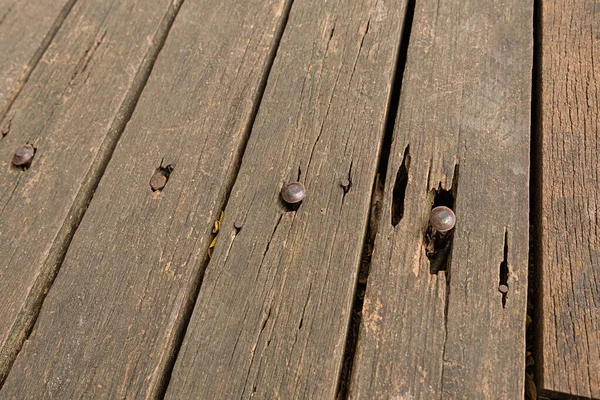The Art Of Deck Repair: Elevating Your Outdoor Living Experience
Decks serve as extensions of our homes, providing a unique space for relaxation, entertainment, and connection with the outdoors. Over time, however, exposure to the elements can take a toll on your deck, leading to wear and tear that requires timely repair. In this guide, we will explore the art of deck repair, offering insights and practical tips to enhance your outdoor living experience.
Assessing the Damage
Inspection and Evaluation
Before diving into the repair process, it's crucial to conduct a thorough inspection of your deck. Look for signs of rot, loose boards, protruding nails, and any structural issues. Take note of areas that may need attention, and prioritize repairs based on the severity of the damage.
Identifying Materials
Understanding the materials used in your deck's construction is essential for effective repairs. Different types of wood, composite materials, and finishes require specific approaches. Knowing the composition of your deck will help you choose the right tools and materials for the job.
Planning Your Deck Repair
Setting a Budget
Before embarking on any repair project, establish a realistic budget. Factor in the cost of materials, tools, and any professional assistance you may need. Having a clear budget in mind will guide your decisions and ensure a financially sound repair process.
Scheduling and Timing
Consider the climate and time of year when planning your deck repairs. Ideally, choose a time with mild weather to facilitate the curing and drying of materials. Plan the repairs around your schedule, ensuring you have adequate time to complete the project without rushing.

Essential Tools and Materials
Basic Tools
To initiate a successful deck repair, gather fundamental tools including a hammer, screwdriver, drill, saw, and tape measure. These tools play a pivotal role in the removal of damaged components, precision cutting of replacement materials, and securing new elements firmly in place.
Decking Materials
The selection of appropriate decking materials is paramount for a seamless and effective repair. Whether opting for traditional wood, composite decking, or alternative materials, it's crucial that they harmonize with the existing deck, ensuring a cohesive appearance. Consider factors such as durability, maintenance requirements, and aesthetic appeal to make informed choices that contribute to the overall longevity and visual appeal of your deck.
Step-by-Step Deck Repair Guide
Removing Damaged Boards
Initiate the deck repair process by meticulously extracting damaged or rotted boards. Employ a pry bar or drill to loosen screws or nails securing the compromised boards. Exercise caution to prevent inadvertent damage to surrounding boards during this removal process, ensuring a smooth transition to the subsequent repair steps.
Inspecting and Treating Structural Components
Thoroughly examine the underlying deck structure for any indications of damage or weakness. Apply suitable wood preservatives or sealants to treat affected areas, mitigating the risk of further deterioration. If necessary, reinforce the structure to guarantee the deck's safety and stability, addressing potential issues proactively.
Installing Replacement Boards
Cut replacement boards to match the dimensions of the removed sections. Secure them firmly in place using screws or nails, ensuring alignment with the existing deck pattern. Opt for weather-resistant fasteners to extend the longevity of the replacement boards and fortify the overall structural integrity of your deck.
Maintenance Tips for Long-Term Deck Health
Regular Inspections
Continuing the enjoyment of your revitalized deck requires ongoing attention. Schedule regular inspections to catch potential issues before they escalate. Look for signs of water damage, insect infestation, or any loose components. Promptly addressing minor concerns can prevent the need for extensive repairs in the future.

Cleaning and Preventive Measures
Keep your deck clean by regularly sweeping away debris and dirt. Consider power washing to remove deep-seated stains and mold. Additionally, apply a protective sealant or stain every few years to shield the wood from harsh weather conditions and UV rays, preserving its natural beauty.
Safety Considerations
Weight Capacity
Be mindful of the weight capacity of your deck, especially if you plan to host gatherings or place heavy furniture. Overloading the structure can lead to sagging or even collapse. Refer to the deck's construction plans or consult with a professional to ensure it can safely accommodate the intended use.
Railing and Baluster Integrity
Ensure the ongoing safety and visual appeal of your deck by routinely checking the railing and balusters for stability and good condition. Promptly replace any damaged or wobbly components to maintain a sturdy and secure railing. This not only enhances safety but also contributes significantly to the overall aesthetic appeal of your deck, creating a visually pleasing and secure outdoor space.
Building Permits and Regulations
If your deck repair involves significant alterations or additions, check local building codes to determine if you need a permit. Adhering to regulations ensures the safety and compliance of your deck with local standards. Professionals can guide you through the permitting process and ensure your repairs meet all necessary requirements.
Embracing Sustainable Practices
Eco-Friendly Decking Options
Consider eco-friendly materials for your deck repairs. Sustainable choices such as recycled wood or composite decking made from recycled materials reduce environmental impact. Embracing green practices not only benefits the planet but also enhances the long-term sustainability of your outdoor living space.
Recycling and Disposal
Dispose of old or damaged materials responsibly by recycling whenever possible. Many local waste management facilities accept wood for recycling, contributing to reduced landfill waste. Investigate disposal options in your area to align your deck repair project with environmentally conscious practices.
Additional Tips for Deck Care
- Rotate Furniture: Regularly rearrange your outdoor furniture to distribute weight evenly across the deck surface. This helps prevent excessive wear on specific areas.
- Use Furniture Pads: Place protective pads under heavy furniture legs to prevent scratching and indentations on the deck surface.
- Inspect for Insects: Periodically check for signs of insect activity, such as termite damage or carpenter ant infestations. Promptly address any pest issues to prevent further damage.
- Weed Barrier Fabric: Install a weed barrier fabric between the ground and the deck to prevent weed growth. Weeds can cause moisture retention, leading to wood decay.
- Avoid Metal Shovels: When removing snow, use a plastic shovel to minimize the risk of scratching or damaging the deck surface. Clear snow promptly to prevent moisture-related issues.
Hawthorn VIC, Australia
Phone:1800-332-525

